Thinking about getting that tattoo removed? You’re not alone.
Many people decide to erase their ink for various reasons, whether it’s a change in lifestyle, a new job, or simply a shift in personal taste. Laser tattoo removal has become the go-to solution for those looking to reclaim their skin, but one of the most common questions is how long the process actually takes.
The timeline for laser tattoo removal can vary widely based on several factors, including the size and color of the tattoo, your skin type, and the technology used. Understanding these elements can help you set realistic expectations for your journey toward a clean slate.
Let’s dive into the details and discover what you need to know about the duration of laser tattoo removal.
Understanding Laser Tattoo Removal
Laser tattoo removal is a cosmetic procedure that effectively eliminates ink from the skin using laser technology. This method stands out due to its minimal side effects and reduced risks compared to traditional techniques.
What Is Laser Tattoo Removal?
Laser tattoo removal targets ink particles embedded in the skin and breaks them down, restoring the skin to its pre-tattoo condition. It provides a safe alternative to older methods like dermabrasion, cryosurgery, and excision.
Many individuals favor this approach because it allows for more precise treatment with fewer complications.
Process of Tattoo Formation
Tattoos form when an electric tattoo machine punctures the skin and deposits pigment into the dermal layer, making them challenging to remove due to their depth.
Laser Technology
Laser tattoo removal utilizes selective energy pulses to disintegrate ink particles. The process involves heating the particles, causing them to expand and fragment. This temperature difference effectively breaks down the ink, allowing the body’s immune system to eliminate the particles over time.
Factors Affecting Removal Time
Several factors influence the duration of laser tattoo removal, which can impact the number of sessions required to achieve desired results.
Size of the Tattoo
Larger tattoos require more sessions due to the increased amount of ink. For example, a full sleeve tattoo may need 10 to 15 sessions, while a small heart tattoo might only need 3 to 5 sessions.
Age of the Tattoo
Older tattoos generally require fewer sessions, as the body tends to expel some ink over time. However, established tattoos may present challenges since ink can settle deeper in the skin, complicating removal.
Type of Ink Used
The pigment and composition of the ink significantly affect removal difficulty. Professional tattoos often use more resilient inks, necessitating additional sessions compared to amateur tattoos, which typically use easier-to-remove inks.
Color of the Ink
Some colors are more challenging to erase. Black and dark colors respond best to laser removal, while light colors, especially greens and yellows, often require more treatments.
Tattoo Placement
Location on the body matters; areas with thinner skin, like the wrist or ankle, may respond faster to treatment than areas with thicker skin, such as the back.
Individual Differences
Individual differences significantly impact the duration of laser tattoo removal. Factors such as skin type and immune system health play critical roles in determining how efficiently your body can eliminate the ink.
Skin Type
Skin type affects how the skin interacts with laser technology. Those with lighter skin tones typically experience better results, as the contrast between the skin and the tattoo ink allows the laser to target the ink particles more effectively.
Conversely, darker skin can absorb some laser wavelengths, making the treatment less efficient. Additionally, individuals with sensitive skin may require longer intervals between sessions to allow for proper healing and minimize side effects.
Immune System Health
Immune system health is another vital consideration for tattoo removal duration. A robust immune system enhances the body’s ability to break down and eliminate ink particles.
Individuals with compromised immune systems may see a slower response to treatment, resulting in extended timelines for complete tattoo removal. Factors such as age, overall health, and lifestyle choices influence immune system function, which can directly impact the efficiency of the laser tattoo removal process.
Treatment Duration and Sessions
The duration and number of sessions for laser tattoo removal depend on various factors, including tattoo characteristics and individual response. Understanding these elements helps you prepare for the removal process.
Average Number of Sessions Required
The average number of sessions for laser tattoo removal typically ranges from 6 to 12. Factors influencing this range include the tattoo’s size, color, and location, alongside your skin type and immune system response.
In some cases, you might need as few as 4 sessions or as many as 15 or more for complete removal.
Typical Session Length
Each session generally lasts between 10 and 20 minutes. The actual duration varies based on the tattoo’s size and complexity. Shorter sessions often address smaller or simpler tattoos effectively.
Healing Time Between Sessions
Healing time between sessions is essential for your skin to recover. It’s common to space sessions 4 to 8 weeks apart. This interval allows your body to flush out broken-down ink particles and promotes optimal healing of the treated area.
What to Expect During the Process
Understanding what occurs at each stage of laser tattoo removal helps you prepare for the journey. Familiarize yourself with the pre-treatment, treatment, and post-treatment phases.
Before Treatment
- Consultation: Schedule an in-person consultation with a qualified professional to evaluate your skin and tattoos. This assessment provides essential details about the process and aids in creating a personalized treatment plan.
- Health Considerations: Wait until specific health conditions resolve before starting treatment. Pregnant or nursing women and individuals with bacterial infections or open wounds around the treatment area face advisement against proceeding.
- Lifestyle Adjustments: Quit smoking, as it enhances the healing process and reduces the likelihood of needing multiple treatments. Improved healing times lead to a more efficient removal journey.
During Treatment
- Session Duration: Expect laser treatment sessions to last anywhere from 10 to 60 minutes, varying based on tattoo size and complexity. Larger tattoos or intricate designs require more time for effective treatment.
- Pain Management: Various pain management options exist to ensure comfort during the procedure. Your provider may use topical anesthetics or cooling methods to minimize discomfort during the laser application.
- Laser Technology: Advanced laser systems effectively target ink particles, disintegrating them for immune system clearance. The professional adjusts settings according to tattoo characteristics for optimal results.
After Treatment
- Healing Process: Post-treatment, skin may exhibit redness, swelling, or scabbing. These symptoms typically resolve in 1 to 2 weeks. Allow time for proper healing to ensure effective results in subsequent sessions.
- Aftercare Instructions: Follow specific aftercare instructions provided by your practitioner. Maintaining clean, moisturized skin while avoiding sun exposure and swimming aids in healing and minimizes complications.
- Follow-Up Sessions: Schedule follow-up sessions 4 to 8 weeks apart as your skin heals. This interval allows your body to gradually eliminate broken-down ink particles, enhancing overall effectiveness during the removal process.
Tips for Accelerating Tattoo Removal
To enhance the laser tattoo removal process, consider these practical tips:
- Follow Aftercare Instructions: Adhere strictly to the aftercare guidelines provided by your technician. Proper care reduces complications and promotes faster healing.
- Maintain Hydration: Drink plenty of water before and after sessions. Staying hydrated supports your skin’s recovery and assists your immune system in eliminating ink particles.
- Avoid Smoking: Refrain from smoking, as it inhibits healing. Smoking can slow down blood flow and recovery, extending the waiting period between sessions.
- Eat a Healthy Diet: Consume a balanced diet rich in vitamins and antioxidants. Foods that boost the immune system, like fruits and vegetables, can enhance recovery rates.
- Schedule Sessions Consistently: Stick to the recommended schedule for your sessions, typically every 4 to 8 weeks. Regular treatments can keep the ink fading consistently.
- Consider Skin Health Treatments: Explore skin treatments prior to starting laser removal. Healthy skin may respond better to lasers, potentially reducing session counts.
- Discuss Pain Management Options: Discuss pain management with your technician to ensure maximum comfort during sessions. Comfort during treatment might lead to fewer stress-related delays.
- Limit Sun Exposure: Avoid excessive sun exposure before and after sessions. Sunburn can complicate the healing process, possibly prolonging the overall timeframe.
By following these tips, you can potentially accelerate your tattoo removal journey and achieve clearer skin sooner.
Conclusion
Laser tattoo removal is a journey that requires patience and understanding. By being aware of the factors that influence treatment duration, you can better prepare for the process ahead. Each session plays a crucial role in breaking down ink particles, and the healing time between sessions is just as important.
Staying committed to your aftercare and following your technician’s advice will help optimize results. Remember that everyone’s experience is unique, and individual differences can affect how quickly you see progress.
With the right approach and realistic expectations, you’ll be on your way to achieving clearer skin and moving forward without the ink that no longer serves you.
Frequently Asked Questions
What is laser tattoo removal?
Laser tattoo removal is a cosmetic procedure that uses advanced laser technology to break down ink particles in the skin. This method is favored for its precision, minimal side effects, and lower risks compared to older techniques.
How long does the tattoo removal process take?
The tattoo removal process can vary widely, typically ranging from a few months to over a year. Factors influencing the timeline include tattoo size, color, skin type, and the technology used.
How many sessions are needed for laser tattoo removal?
On average, laser tattoo removal usually requires between 6 to 12 sessions. The exact number depends on factors such as the tattoo’s size and age, the ink colors used, and individual skin characteristics.
What factors influence the duration of tattoo removal?
Several factors can affect the duration of tattoo removal, including tattoo size, color, age, placement on the body, and individual skin type and immune response. Larger and more colorful tattoos typically require more sessions.
Does laser tattoo removal hurt?
Many individuals report some discomfort during tattoo removal, likening it to a rubber band snapping against the skin. Pain management options are available to ensure comfort during the procedure.
Can all tattoos be completely removed?
Most tattoos can be significantly faded or completely removed with laser treatment, but results vary based on tattoo size, colors, skin type, and other individual factors.
How can I prepare for tattoo removal?
Before starting laser tattoo removal, it’s recommended to consult a qualified professional, maintain a healthy diet, avoid smoking, and stay hydrated to enhance healing and results.
What can I expect after a session?
Post-treatment, you may experience redness and swelling in the treated area. These symptoms typically resolve within 1 to 2 weeks. Following aftercare instructions is crucial for effective healing.
How often should I schedule removal sessions?
Sessions are generally scheduled every 4 to 8 weeks to allow the skin time to heal and the body to eliminate broken-down ink particles effectively.
Are there any lifestyle changes needed during the process?
Yes, it is advised to avoid smoking and excessive sun exposure, maintain hydration, and follow a nutrient-rich diet to support skin health and recovery during tattoo removal.
Fast, Effective Tattoo Removal at Integrity Ink
Wondering how long tattoo removal will take? At Integrity Ink, our expert team uses cutting-edge technology to deliver faster, more efficient results.
With personalized treatment plans, we help you remove unwanted tattoos as quickly as possible. Visit Integrity Ink today to start your tattoo removal process and enjoy clear skin sooner!

